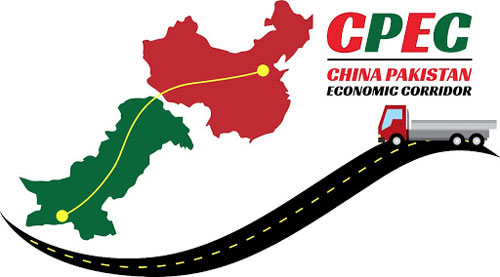A decade of affable cooperation between China and Pakistan has been completed, with its share of ebbs and flows. China-Pakistan Economic Corridor (CPEC) is the first-ever flagship project of the Chinese Belt and Road Initiative (BRI) which aims to connect China with other countries and regions. Pakistan and China successfully implemented the idea of CPEC after it was agreed in 2013. The pioneer of the new era of China’s Modernisation, President Xi Jinping visited Pakistan in 2015 to endorse the all-weather and time-tested friendship between the two countries. CPEC aimed to connect the Chinese Xinjiang province with the Arabian Sea through Gwadar. In its ambitions to open up its economy, Beijing decided to bring US$ 45 billion investment in Pakistan through connectivity projects such as roads, infrastructure and power-generating electricity projects. Afterwards, the investment expanded to US$ 62 billion.
CPEC is essential for both China and Pakistan. It will help China in many ways expanding its economy to build connectivity with other countries. On the other hand, CPEC is crucial for Pakistan’s economy. It brings job opportunities, increases Foreign Direct Investment and creates geo-economic interdependence. Until the end of 2022, according to China’s National Development and Reform Commission (NDRC), CPEC has created 2,36,000 jobs, of which 155,000 went to Pakistani workers. Similarly, CPEC has helped Pakistan mitigate the electricity crisis. Until now, CPEC’s power projects such as the Sahiwal Coal plant and Port-Qasim Power Plant and transmission projects such as Matiari-Lahore high voltage direct current (HVDC) have generated almost 6,000 MW electricity in Pakistan. Recently, the first shipment of dry chillies from Pakistan also reached China. Meanwhile, Pakistan received 160 electric buses from a Chinese company and inaugurated the Saindak Expansion Project in Balochistan.
With the new government in Islamabad and the second phase of the CPEC about to commence, Pakistan is required to adopt a holistic approach for the success of this stage. Not only do the projects under CPEC need expedited work, but the success of CPEC also necessitates business-to-business cooperation and the transformation of the socioeconomic conditions of the people of Pakistan. This can be easily done through many skill-building programs. Recently, the Department of Higher Education Khyber Pakhtunkhwa (KPK) and the CPEC Cultural Communication Center of China signed an MoU aiming to enhance the skilled workforce in the province by training digital skills to around 200,000 students. Such initiatives will not only increase the confidence of the young generation but also make CPEC a successful venture.
The CPEC was initially decided to be completed under 3 phases. The first phase was to address economic bottlenecks such as Energy and Infrastructure. Over a decade, Pakistan could reach the second phase of CPEC which is aimed at bringing industrialisation and socio-economic and agricultural cooperation. In this phase, Pakistan has to develop 9 special economic zones, out of which three are priority. These include Dhabeji SEZ, Allama Iqbal Industrial City and Rashakai Economic Zone. The first phase of Rashakai SEZ and Gwadar Free Zone SEC has been functional and operating.
However, there are some important challenges that SEZs can face in their due process. SEZs require Commercial Courts for fair and quick justice as the judicial system in Pakistan usually delays the procedure. For any foreign investor, it is necessary to ensure swift justice. Only the Government of Punjab, through an ordinance in 2021, decided to build commercial courts, but there is no further development on it yet.
Similarly, the earlier Industrial Estates (IEs) became hubs of real estate increasing the land prices. This has reduced the buying power and limited the scope of IEs. Therefore, the governance mechanism must reduce the role of real estate in the SEZs.
Lastly, there should be a specific ratio of job distribution in SEZs between Pakistan and foreigners. In SEZs in Egypt, it is 1:9 which is one foreigner after nine locals to get a job. Similarly, in Nigeria, it is 1:4 which is one foreign worker after four Nigerian citizens to get a job in SEZ. This will not only reduce the royalties of issues of the local communities but also strengthen the social contract between the state and the people of the country.
CPEC stands as a pivotal project symbolising the enduring friendship and cooperation between the two nations. Over the past decade, CPEC has made significant strides in addressing critical infrastructure and energy needs in Pakistan. Pakistan is facing severe challenges in implementing the CPEC both locally and internationally. Pakistan’s economic condition, unavailability of funds, security issues, and political instability are the challenges for the country in completing CPEC. Despite facing criticism and challenges both domestically and internationally, CPEC remains on track, with its successful completion requiring unwavering commitment and political will from Islamabad.
The writer is associated with the Centre for Strategic and Contemporary Research (CSCR). He tweets @Usman_Zulfiqar_ and can be reached at usmanalee124@gmail.com.










